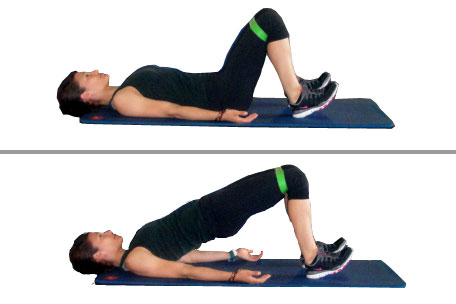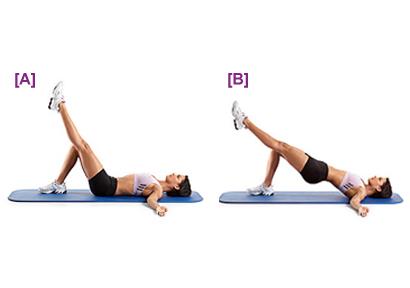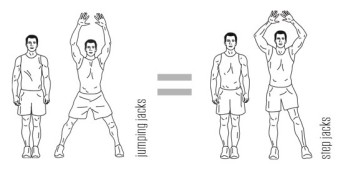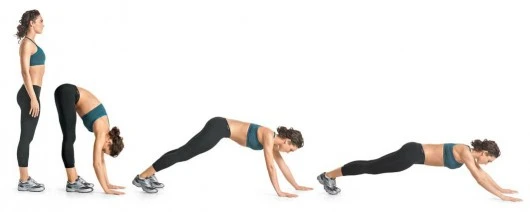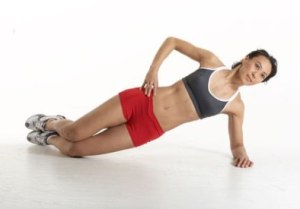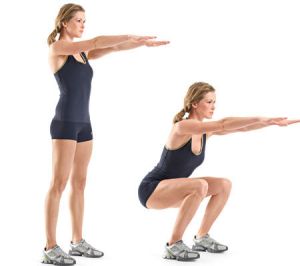In recent years, ‘functional fitness’ has become a buzz word in the fitness industry to sell and package a wide array of exercise programs to potential training clients. Whether sports specific or generalized training is sold, functional fitness terminology is used so frequently that it often means different things to different populations.
For purposes of my Fit for Life Series, I define functional fitness (exercise) as a strength training plan which involves performing work against resistance (preferably body weight resistance) in such a manner that the improvements in strength directly enhance the performance of movements found in those activities of daily living. Yet, before I continue with a discussion of functional fitness, I would first like to define the dual components of fitness.
The health related components of fitness measure an individual’s cardiorespiratory endurance, muscular strength and endurance, flexibility and body composition (% fat vs. lean tissue). The skill related components of fitness rate an individual’s agility, coordination, balance, power, reaction time and speed.
Used in this context, a functional, Fit for Life, exercise plan would train your body for life, rather than for a specific sport or for a certain aesthetic appearance. This type of training is especially helpful for older adults because it addresses muscle imbalances and asymmetries, and it addresses improvements (strength, flexibility) for the ways we move throughout our daily activities.
There are five basic movement patterns that we use in everyday life:
1. Bend-and-lift movements. In the gym we call it squatting, in everyday life it’s getting in and out of a chair or squatting down to lift a bag of groceries from the floor. Bend and lift movements require strength in the glutes, quads, and hamstrings, but also plenty of stability in the core, and flexibility in the knees and ankles.
2. Single-leg movements. You’ll often train single leg movements in the gym with a variety of lunging movements. In real life, single-leg movements are called for when you walk, when you climb or descend stairs, or when you bend and reach forward on one leg to get something from the floor. Like the bend-and-lift movements, single-leg movements require combined strength, stability and flexibility with an added element of balance over a changing center of gravity.
3. Pushing movements. Pushing movements typically involve your upper body pushing forward (opening a store door) pushing overhead (putting an object on a high shelf) or pushing to the side (lifting your torso from a side-lying position). In your workout you can train for pushing movements with pushups, overhead presses or side planks.
4. Pulling movements. Pulling movements in your activities of daily living might include pulling the car door shut, pulling the sheets down from the top shelf of the linen closet, or pulling your suitcase off the floor. In your workouts you’ll train for pulling movements by developing core stability, strength in your back and shoulders, stability in your shoulder blades and flexibility in your shoulders.
5. Rotational movements. Your thoracic spine rotates with every step you take and any time you swing a golf club or tennis racket. Any time you reach across your body or twist through the spine, you’re engaging in a rotational movement. This complex movement pattern requires a great deal of core stability and strength to support the spine during the rotational motion.
Over the next few weeks, I will post ten articles. Each article will fully describe and illustrate the activities I believe are the best exercises to perform each day to improve fitness and function for life.
My next blog entry will describe the basic squat exercise with options for various progressions as improvements in strength are realized. I look forward to sharing my thoughts and these training tips with you, my blog reader in the days ahead; I invite your comments and questions should you desire to engage in a conversation on this topic.
 Repeat the movement for 8 to 12 reps and then perform the shoulder press while holding the dumbbell in your left hand. Now balance on your right foot, holding the dumbbell in your right hand, press up for 8 to 12 repetitions; then repeat holding the dumbbell in your left hand for the same about of repetitions.
Repeat the movement for 8 to 12 reps and then perform the shoulder press while holding the dumbbell in your left hand. Now balance on your right foot, holding the dumbbell in your right hand, press up for 8 to 12 repetitions; then repeat holding the dumbbell in your left hand for the same about of repetitions.

